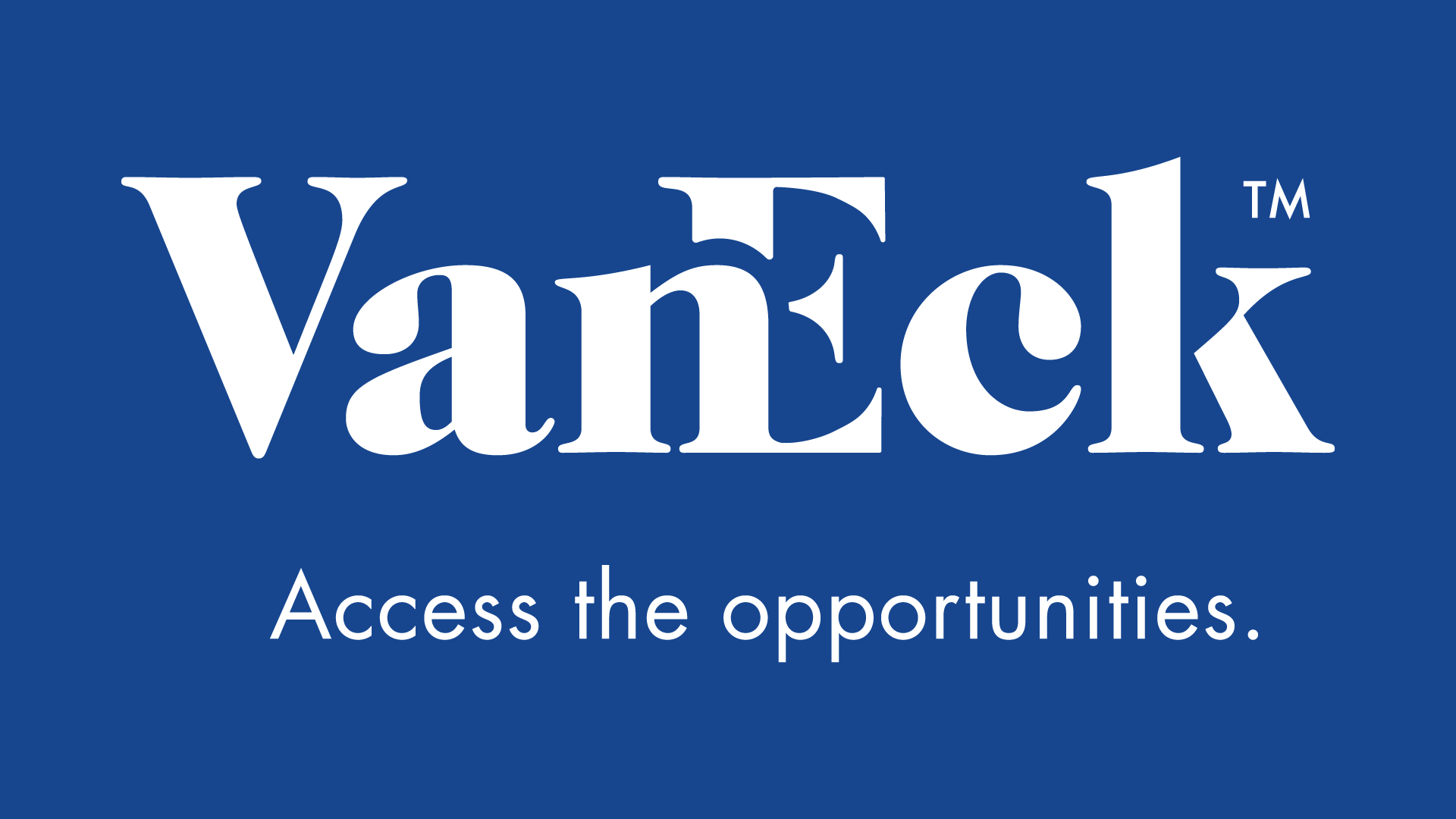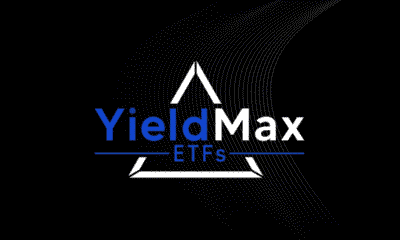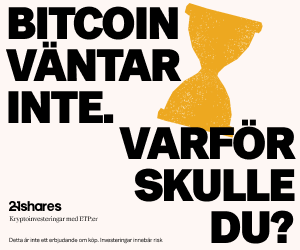Nyheter
Gold Follows Rate Hike Pattern
Publicerad
9 år sedanden

Gold and Precious Metals Weakness to Rally: Gold Follows Rate Hike Pattern
Rate Increase and Political Uncertainty in U.S. are Primary Drivers in March
Expectations around the Federal Reserve’s (Fed) March 15 rate announcement were the principal drivers of the gold market in March. U.S. economic statistics have been somewhat positive recently, leading the market to expect the Fed to become more hawkish and to perhaps even guide for four rate increases in 2017 (one more than the Fed had announced in December). As a result, gold was weak ahead of the Fed’s rate decision, falling roughly $50 over two weeks to the $1,200 per ounce level. On March 15 when the Fed implemented its first 2017 rate hike as expected, it maintained its projection of only two more rate increases this year. Economic guidance also remained unchanged and Chair Janet Yellen said the Fed is willing to tolerate temporary inflation in order to overshoot its two percent target. The $1,200 per ounce gold price level held on the dovish Fed announcements and gold rallied to end the month with a small gain closing March at $1,249.35 per ounce.
Political activity in the U.S. was also supportive of gold. As we had expected, the market euphoria surrounding the November U.S. presidential election continues to dissipate. The Trump administration has suffered two strikes: the courts are blocking the implementation of new travel restrictions, and the House has blocked healthcare reform. In our opinion, these early defeats make it increasingly unlikely that the administration will be able to deliver on the expected pro-growth reforms that drove the market to new highs following the election. We believe one more strike could create a confidence crisis, which makes meaningful tax reform the next issue that will be vital for Trump’s presidency to gain some positive momentum.
The price trend for gold stocks mimicked gold bullion in March, for the most part. Both the NYSE Arca Gold Miners Index1(GDMNTR) and the MVIS™ Junior Gold Miners Index2 (MVGDXJTR) fell ahead of the March 15 Fed announcement and gained afterwards, but, unlike the metal, both gold stock indices ended the month with small losses overall.
Gold’s Before and After Rate Hike Pattern
The March 0.25% Fed rate increase was the third in this tightening cycle that began in December 2015. In all three instances, increasing pessimism in the gold market caused gold to fall to long-term or technical lows. This pessimism was caused by anticipation of rising real rates, a strong U.S. dollar, and faith in the Fed’s outlook for a strengthening economy. However, the economy has not been as robust as hoped and recently, rising inflation has caused real rates to fall. The Fed rate increase in December 2015 was a major turning point, marking the end of the historic 2011 – 2015 bear market for gold. A shift in sentiment also lead to gold rallies following the December 2016 and March 2017 rate hikes. Markets were irrationally causing the U.S. dollar to become overbought and gold to be oversold before each rate increase. Three times makes a pattern and if we have learned anything in our history of investing, it’s that trading patterns end once they are recognized. We will look for market sentiment, Fed behavior, or some other driver to help change the pattern when the Fed hikes rates again. The market expects the next possible rate hike at the June Federal Open Market Committee (FOMC) meeting.
The Current (More Rational) Market Bubble Could Pop on Growing Debt
The current economic expansion and bull market in stocks are among the longest on record. Such cycles do not last forever and we have commented in the past on the risks an economic downturn would bring to the financial system. While valuations for stocks and real estate are lofty, the level of mania that we had felt ahead of the tech bust (2001) or housing bubble (2008) has not materialized. Although the popularity of exchange traded funds (ETFs) and other passive investment vehicles could be seen as a form of mania, it is difficult to see anything happening in those vehicles that foreshadows a market crash. Perhaps, if there is to be a downturn, this time it will likely be more orderly than others in the recent past.
While economic downturns are not necessarily drivers for gold, since the subprime crisis of 2008-2009 the financial system has been in such a precarious state that even a mild recession could be financially devastating, thus ultimately benefitting gold and gold stocks. The difference in this cycle is, firstly, that sovereign debt globally is higher than it has ever been during peacetime and it continues to grow. The Congressional Budget Office’s (CBO) annual report shows the debt/GDP ratio3 has doubled since 2008 to 77% today and is forecasted to reach 150% in 2047. The CBO also forecasts debt service rising from 7% today to 21% in 2047. The budget deficit was not mentioned in President Trump’s February 28 speech to Congress. We believe no politician wants to seriously tackle the debt bubble for fear of getting voted out of office for raising taxes or cutting entitlements.
Recently we have seen that it appears politically impossible to implement the necessary reforms required to avoid insolvency or a systemic failure of the public healthcare insurance system. Social Security is yet another entitlement that appears to be heading toward insolvency. Gridlock reigns, which makes a debt crisis or another calamity a prerequisite to motivate those in Washington to act constructively. Such a crisis becomes much more likely in a recessionary economy.
The Fed’s three rate increases in this cycle amount to 75 basis points (0.25% on December 16, 2015; 0.25% on December 14, 2016; and 0.25% on March 15, 2017). U.S. rates remain far below historic norms and rates in other advanced economies are even lower. Quantitative easing did not work as well as planned. The Fed is holding trillions of dollars in U.S. Treasuries and mortgage-backed securities on its balance sheet and may have to resort to more radical policies to stimulate the economy in the next recession, which brings added financial risks.
Indications of a Late-Cycle Economy Are Increasing
Here are a number of signs of a late-cycle economy and market. Many of these were highlighted in recent Gluskin Sheff4 newsletters:
• At eight years, the S&P 500® Index5 is in its second longest bull market since 1928.
• With a 16.9% annualized gain, this is the third strongest S&P bull market since 1928.
• Despite stock market gains, GDP growth has expanded just 1.8% annually, versus 3.4% during the longest bull market, occurring from 1987 to 2000.
• 10 of the last 13 Fed hiking cycles ended with a recession.
• Price to Earnings multiples are in the top quintiles historically and the most expensive since the dot-com bubble (1995-2001).
• Margin debt is at all-time highs.
• Auto sales and loan delinquencies suggest automotive activity has peaked.
• A record 279 corporate insiders have sold stock so far this year.
• Initial jobless claims are at their cycle lows, typical historically in the waning months/years of expansions.
• Each of the seventeen Republican presidents since Ulysses S. Grant has experienced a recession within roughly two years of taking office.
Sentiment and Consumption: A Recession Precursor?
A recent Morgan Stanley report interestingly examines historical consumer confidence, as measured by the Conference Board Consumer Confidence Index,6 and personal consumption expenditures7 (PCE). The sentiment of consumers and businesses (soft data) has been trending higher, while data that tracks actual economic results (hard data) has stagnated. This chart is particularly compelling. Notice the divergence between the soft and hard data preceding the last three recessions. A similar divergence is happening now, as consumer confidence appears to have reached its highest level since the tech bust.
Divergence Between Sentiment and Consumption Precedes Recessions
(click to enlarge) Source: Bloomberg; Federal Reserve Bank of St. Louis; U.S. Bureau of Economic Analysis. Data as of February 28. 2017.
While we hope that President Trump is able to bring tax, regulatory, and other reforms that energize the U.S. economy, political headwinds and late cycle evidence suggest it is prudent for investors to begin to hedge against the financial pain that the next recession might bring.
by Joe Foster, Portfolio Manager and Strategist
With more than 30 years of gold industry experience, Foster began his gold career as a boots on the ground geologist, evaluating mining exploration and development projects. Foster is Portfolio Manager and Strategist for the Gold and Precious Metals strategy..
Please note that the information herein represents the opinion of the author and these opinions may change at any time and from time to time.
1NYSE Arca Gold Miners Index (GDMNTR) is a modified market capitalization-weighted index comprised of publicly traded companies involved primarily in the mining for gold.
2MVIS™ Global Junior Gold Miners Index (MVGDXJTR) is a rules-based, modified market capitalization-weighted, float-adjusted index comprised of a global universe of publicly traded small- and medium-capitalization companies that generate at least 50% of their revenues from gold and/or silver mining, hold real property that has the potential to produce at least 50% of the company’s revenue from gold or silver mining when developed, or primarily invest in gold or silver.
3In economics, the debt-to-GDP ratio is the ratio between a country’s government debt (a cumulative amount) and its gross domestic product (GDP) (measured in years). A low debt-to-GDP ratio indicates an economy that produces and sells goods and services sufficient to pay back debts without incurring further debt.
4Gluskin Sheff + Associates Inc., a Canadian independent wealth management firm, manages investment portfolios for high net worth investors, including entrepreneurs, professionals, family trusts, private charitable foundations, and estates.
5The S&P 500® Index (SPX) consists of 500 widely held common stocks, covering four broad sectors (industrials, utilities, financial, and transportation).
6The Conference Board Consumer Confidence Index® is an indicator designed to measure consumer confidence, which is defined as the degree of optimism on the state of the economy that consumers are expressing through their activities of savings and spending.
7Personal consumption expenditures (PCE) is the primary measure of consumer spending on goods and services in the U.S. economy. It accounts for about two-thirds of domestic final spending, and thus it is the primary engine that drives future economic growth.
Important Disclosures
This commentary originates from VanEck Associates Corporation (“VanEck”) and does not constitute an offer to sell or solicitation to buy any security.
Du kanske gillar
-


Is Mobile Powering the Future of Gaming?
-


Miners Find Their Mojo as Gold Consolidates
-


The Future of Fandom: Why Esports and Gaming Are Outpacing Traditional Sports
-


Introducing the Defense Industry’s ‘Titan 5’
-


NATO Members Agree on 5% Defense Investment Target by 2035
-


Market Snapshot: Gold’s Resilience Defies Risk-On Rally
Nyheter
FalconX förvärvar den ledande ETP-leverantören 21shares, vilket accelererar konvergensen av digitala tillgångar och traditionell finans
Publicerad
10 timmar sedanden
22 oktober, 2025
Förvärvet förenar FalconX marknadsledande Prime Brokerage-plattform med 21shares ETP-infrastruktur för att främja investeringsprodukter för digitala tillgångar
Markerar FalconX tredje strategiska transaktion under 2025, vilket understryker dess avgörande roll i att forma ekosystemet för digitala tillgångar
FalconX, en ledande institutionell Prime Brokerage-leverantör för digitala tillgångar, meddelade idag att de har gått med på att förvärva 21shares, leverantören av världens största utbud av börshandlade fonder och produkter (ETFer/ETPer) inom kryptovaluta. Transaktionen representerar en viktig milstolpe i FalconX strategi att accelerera konvergensen av noterade marknader och digitala tillgångar, samtidigt som den stärker sin globala närvaro i USA, Europa och Asien-Stillahavsområdet.
I en av de viktigaste ETP-branschtransaktionerna de senaste åren sammanför förvärvet 21shares expertis inom utveckling och distribution av tillgångsförvaltningsprodukter med FalconX institutionella infrastruktur, struktureringskapacitet och riskhanteringsplattform.
Tillsammans kommer de två företagen att accelerera skapandet av skräddarsydda investeringsprodukter som möter den växande institutionella och privata efterfrågan på reglerad exponering för digitala tillgångar.
Sedan grundandet 2018 av Hany Rashwan och Ophelia Snyder har 21shares vuxit till en global ledare inom digitala ETPer och förvaltar tillgångar till ett värde av över 11 miljarder dollar fördelat på 55 noterade produkter per den 30 september 2025. Dess egenutvecklade teknikplattform och väletablerade nätverk av partners ligger till grund för deras förmåga att snabbt och i stor skala lansera nya produkter på marknaden. FalconX, medgrundat av Raghu Yarlagadda, har underlättat handelsvolymer på över 2 biljoner dollar och en global kundbas på över 2 000 institutioner, tack vare sin kryptobaserade handels-, kredit- och teknikinfrastruktur.
”21shares har byggt en av de mest betrodda och innovativa produktplattformarna inom digitala tillgångar”, säger Raghu Yarlagadda, VD för FalconX. ”Vi bevittnar en kraftfull konvergens mellan digitala tillgångar och traditionella finansmarknader, då krypto-ETPer öppnar nya kanaler för investerarnas deltagande genom reglerade, välbekanta strukturer. FalconX har byggt den institutionella ryggraden för handel, derivat och kredit, och att utöka den infrastrukturen till börsnoterade marknader genom 21Shares är ett naturligt nästa steg mot att stärka marknadseffektiviteten. För FalconX är detta en medveten, långsiktig investering i att bygga ett varaktigt företagsvärde över marknadscykler.”
”Under de senaste 8 åren har vi byggt 21shares verksamhet från 0 dollar till mer än 11 miljarder dollar i förvaltat värde. Vi har skalat upp för att nå miljontals kunder i alla hörn av världen och fört in dem i krypto med våra produkter och vår forskning”, säger 21shares grundare Ophelia Snyder och Hany Rashwan. ”Vi ser verkligen fram emot att FalconX fortsätter att bygga vidare på denna starka grund för nästa kapitel i 21shares utveckling.”
”Vårt mål har varit att göra kryptoinvesteringar tillgängliga för alla genom branschledande börshandlade produkter”, säger Russell Barlow, VD för 21shares. ”Nu kommer FalconX att göra det möjligt för oss att agera snabbare och utöka vår räckvidd. Tillsammans kommer vi att vara pionjärer inom lösningar som möter de ständigt växande behoven hos investerare i digitala tillgångar världen över.”
Efter slutförandet kommer 21shares att fortsätta förvaltas oberoende under FalconX-paraplyet. Barlow kommer att fortsätta som VD för 21shares och arbeta nära ledningsgruppen på FalconX för att främja en gemensam vision för framtiden för ekosystemet för digitala tillgångar. Inga förändringar av konstruktionen eller investeringsmålen för de befintliga 21shares ETPerna (Europa) eller ETFerna (USA) är planerade.
Detta förvärv bygger på FalconX strategi för 2025 för att stärka sin globala verksamhet inom handel, kapitalförvaltning och marknadsinfrastruktur. Det följer integrationen av Arbelos Markets och majoritetsandelen som togs i Monarq Asset Management tidigare i år, tillsammans med expansioner i Latinamerika, Asien-Stillahavsområdet och Europa, Mellanöstern och Afrika. I takt med att digitala tillgångar utvecklas till vanliga investeringsprodukter placerar detta drag FalconX i centrum för hur institutioner och investerare får tillgång till kryptoekonomin.
Om FalconX
FalconX är en ledande mäklarfirma för digitala tillgångar för världens främsta institutioner. Vi erbjuder omfattande tillgång till global likviditet för digitala tillgångar och ett komplett utbud av handelstjänster. Vårt dedikerade team, som är tillgängligt dygnet runt för konto-, operativa och handelsbehov, gör det möjligt för investerare att navigera på marknaderna dygnet runt. FalconX Bravo, Inc., ett dotterbolag till FalconX, var den första CFTC-registrerade swap-handlaren som fokuserade på kryptovalutaderivat.
FalconX stöds av investerare som Accel, Adams Street Partners, Altimeter Capital, American Express Ventures, B Capital, GIC, Lightspeed Venture Partners, Sapphire Ventures, Thoma Bravo, Tiger Global Management och Wellington Management. FalconX har kontor i Silicon Valley, New York, London, Hongkong, Bengaluru, Singapore och Valletta. För mer information, besök falconx.io eller följ FalconX på X och LinkedIn.
”FalconX” är ett marknadsföringsnamn för FalconX Limited och dess dotterbolag. Tillgängligheten av produkter och tjänster är beroende av jurisdiktionella begränsningar och FalconX-enhetens kapacitet. För mer information om vilka juridiska personer som erbjuder specifika produkter och tjänster, vänligen se informationen på vår offentliga webbplats, som ingår häri, eller kontakta din relationskontakt.
Om 21shares
21shares är en av världens ledande leverantörer av börshandlade produkter för kryptovaluta och erbjuder de största sviterna av fysiskt stödda krypto-ETPer på marknaden. Företaget grundades för att göra kryptovaluta mer tillgänglig för investerare och för att överbrygga klyftan mellan traditionell finans och decentraliserad finans. 21shares noterade världens första fysiskt stödda krypto-ETP 2018 och byggde upp en sjuårig meritlista av att skapa börshandlade fonder för kryptovaluta som är noterade på några av de största och mest likvida värdepappersbörserna globalt. Med stöd av ett specialiserat forskarteam, egenutvecklad teknik och djupgående expertis inom kapitalmarknaden levererar 21shares innovativa, transparenta och kostnadseffektiva investeringslösningar.
För mer information, besök www.21shares.com.
Nyheter
Hybridreplikering: nästa stora grej för ETFer?
Publicerad
11 timmar sedanden
22 oktober, 2025
ETFer replikerar sitt index antingen fysiskt eller via syntetisk replikering – nu introduceras en ny replikeringsmetod av Scalable Capital
I ETF-världen sker det mindre och större produktrevolutioner då och då. En av dessa i år är förmodligen den nya ”hybridreplikeringen”. I den här artikeln tittar vi närmare på vad detta handlar om och vem som är först med att använda den i sina ETFer.
Hybridreplikering: Vad är det?
Replikeringsmetoder för ETFer kunde tidigare delas in i två grundläggande varianter: Fysisk och syntetisk replikering (även om fysisk replikering fortfarande har en underkategori med ”optimerad sampling”).
Som namnet ”hybridreplikering” antyder är denna nya replikeringsmetod en blandning av fysisk och syntetisk replikering.
ETFen replikerar således dynamiskt sitt underliggande index och kan använda både den ena och den andra varianten för att följa sitt index. Detta kan vara särskilt fördelaktigt för brett diversifierade globala ETFer för att optimalt kunna följa respektive delmarknader.
Vi ska titta närmare på exakt hur detta fungerar och fördelarna och nackdelarna med denna metod om en stund. Men först ska vi titta på de grundläggande skillnaderna mellan de olika replikeringsmetoderna.
Skillnaden: Fysisk, syntetisk och hybridreplikering av ETFer
I grund och botten erbjuder varje form av replikering vissa fördelar och nackdelar. Det är därför det tidigare fanns tre olika replikeringsmetoder som ETFer kunde använda för att replikera sitt motsvarande index. Nu läggs hybridreplikeringsmetoden till:
- (Fullständig) fysisk replikering används för att spåra lättillgängliga och mycket likvida marknader. ETF:er på DAX 40, FTSE 100 eller S&P 500 replikeras därför ofta direkt och fullständigt. De aktier som ingår är bland de största aktiebolagen i respektive land och är lätta att handla med. Dessutom är ansträngningen från ETF-leverantörernas sida att köpa några dussin eller några hundra aktier begränsad.
- Optimerad sampling används huvudsakligen för stora index med flera tusen aktiebolag. För att följa ett globalt globalt aktieindex som MSCI ACWI IMI räcker det till exempel att köpa ett representativt urval på cirka 3 500 aktier istället för de cirka 9 000 aktier som indexet innehåller. Detta sparar ETFen, och därmed dig som investerare, pengar och är mycket mer effektivt.
- Syntetisk replikering används företrädesvis för marknader som är svåra att komma åt, där direktköp av aktier är alldeles för dyrt eller försvåras av regulatoriska förhållanden. Swap-ETFer erbjuder också strukturella fördelar på vissa marknader – till exempel när det gäller källskattebesparingar. Mer om detta strax …
- Hybridreplikering är en kombination av fysisk och syntetisk replikering. En ETF som använder hybridreplikering kan själv inom ETFen bestämma vilka marknader den vill replikera direkt via fysisk replikering och vilka marknader som är bättre inkluderade i portföljen via swappar.
Jämförelse av ETF-replikeringsmetoder
| Fysisk (fullständig) | Fysisk (sampling) | Syntetiskt | Hybrid | |
| Replikerings- metod | Fullständig replikering | Sampling | Swap-based | Blandning av fysisk och syntetisk replikering |
| ETF-beskrivning | Indexet replikeras 1:1 i ETFen | ETF:n innehar ett representativt urval av indexaktier | Indexreplikering sker via en swaptransaktion | ETF innehar aktier både direkt och via swappartners |
| Underliggande tillgångar | Aktier, obligationer | Aktier, obligationer | Aktier, obligationer, råvaruindex, penningmarknadsindex, korta och hävstångsindex | Aktier |
| Typiska egenskaper hos index- komponenterna | Likvida värdepapper | (Delvis) illikvida värdepapper | Likvida och illikvida värdepapper, investeringsrestriktioner (handelsrestriktioner, beskattning), olika tidszoner | Likvida och illikvida värdepapper, investeringsrestriktioner (handelsrestriktioner, beskattning), olika tidszoner |
| Idealt antal indexkomponenter | Lågt | Högt | Låg till hög | Låg till hög |
| Ideal utdelnings- policy | Utdelande och ackumulerande | Utdelande och ackumulerande | Övervägande ackumulerande | Övervägande |
| Exempel index | DAX, Eurostoxx 50, FTSE 100, Dow Jones 30 | MSCI World, MSCI Emerging Markets, MSCI ACWI IMI | MSCI World, MSCI Emerging Markets, Eurostoxx 50 Rohstoff-Indizes, Short DAX, Leverage DAX | MSCI World, MSCI Emerging Markets, MSCI ACWI IMI, Eurostoxx 50 |
Hybrida replikerande ETFer är för närvarande endast tillgängliga på aktieindex
Hur fungerar hybridreplikering med ETFer?
Styrkorna med den nya replikeringsmetoden är särskilt tydliga i brett diversifierade aktieindex som MSCI ACWI eller FTSE All World. Syftet med hybridreplikeringsmetoden är att kombinera fördelarna med fysisk replikering med fördelarna med den syntetiska replikeringsmetoden. Hur fungerar detta i praktiken?
Ett exempel är swap-ETFer på S&P 500, som har en avgörande fördel jämfört med sina fysiskt replikerande syskon – det finns ingen källskatt på utdelningar.
Hur då? Medan fysiskt replikerande ETFer måste betala minst 15 % källskatt på amerikanska utdelningar eftersom de investerar direkt i amerikanska aktier, byter en swap-ETF helt enkelt indexets avkastning med ett motsvarande finansinstitut (motparten eller swappartnern).
Inga amerikanska aktier krävs i ETFens bärarportfölj. Och där inga amerikanska aktier köps direkt uppstår ingen källskatt. Detta är också anledningen till att syntetiska ETFer på S&P 500 har något högre långsiktig avkastning än fysiska S&P 500-ETFer.
Med syntetiska ETFer kan investerare också dra nytta av en unik strukturell dynamik på den kinesiska lokala A-aktiemarknaden. Denna specifika aktiemarknad är starkt begränsad eller reglerad och erbjuder samtidigt en attraktiv miljö för professionella investerare (t.ex. hedgefonder) som följer marknadsneutrala strategier.
Dessa investerare har dock ofta begränsad tillgång, till exempel för blankning för att säkra sin marknadsrisk. Som ett resultat är dessa marknadsaktörer beredda att betala swap-motparterna i syntetiska ETFer (vanligtvis stora banker) en premie på den korta exponering som motparterna är exponerade för.
Denna extra premie förs delvis vidare till investerare i syntetiska A-aktie-ETFer och har historiskt sett lett till överavkastning. Premien kan fluktuera över tid och är främst beroende av efterfrågan från dessa marknadsaktörer.
Jämförelse
En nackdel med en syntetisk ETF jämfört med en fysiskt replikerande ETF är att den kanske inte kan genomföra värdepappersutlåning om den inte innehar de nödvändiga värdepapperen i sin portfölj. Många swap-ETFer använder ändå inte värdepappersutlåning. Detta är dock ett vanligt sätt för ETF:er att generera ytterligare intäkter för fondinvesterare.
Motpartsrisk med swap-ETFer
Med swap-ETFer anges ofta den så kallade motpartsrisken som en stor nackdel. Men är risken med swap-ETFer verkligen så stor? Det korta svaret är: Nej. Därför att:
- Som regel innehar både ETFen och swap-motparten säkerhet i form av likvida värdepapper.
- Denna säkerhet måste alltid fysiskt säkra minst 90 % av nettotillgångsvärdet (NAV). Eller tvärtom: motpartsrisken är begränsad till maximalt 10 % av fondens tillgångar och balanseras dagligen.
- I praktiken är syntetiska ETFer ofta översäkrade (säkerhet > NAV) och du kan när som helst se säkerhetsportföljen och de valda swap-partnerna transparent på webbplatserna för många ETF-leverantörer.
- Hittills har europeiska investerare inte lidit några förluster på grund av swap-motpartsrisk – inte ens under de allvarligaste kriserna (t.ex. 2008 och 2020).
Och det är här hybridreplikeringsmetoden kommer in i bilden – eftersom den till exempel kan användas för att syntetiskt replikera den amerikanska marknaden ”källskatteoptimerad” i en global ETF, medan den europeiska eller japanska aktiemarknaden fysiskt replikeras ”värdepappersutlåningskonformt”. Resultatet är faktiskt kombinationen av ”det bästa av två världar” – eftersom respektive ETF optimalt kan kartlägga motsvarande delmarknader beroende på de strukturella förhållandena och därmed möjliggöra en minimalt högre avkastning för dig som ETF-investerare.
Viktigt: Syntetiska ETFer kan också låna ut värdepapper från carrierportföljen. Det beror sedan på vilka värdepapper i carrierportföljen som är efterfrågade och hur. Med högre efterfrågan eller mindre likviditet kan till exempel vanligtvis högre avkastning uppnås än med mycket likvida värdepapper. Du kan läsa mer om detta i vår artikel om värdepappersutlåning med ETF:er.
Vilka ETFer använder den nya hybridreplikering?
I dag erbjuder endast en leverantör en ETF på MSCI ACWI med hybridreplikering: Xtrackers. Den Frankfurt-baserade kapitalförvaltaren har samarbetat med onlinemäklaren Scalable Capital för att lansera en global ETF.
Nyheter
31IG ETF företagsobligationer med förfall 2031
Publicerad
12 timmar sedanden
22 oktober, 2025
iShares iBonds Dec 2031 Term EUR Corporate UCITS ETF EUR (Dist) (31IG ETF) med ISIN IE000I2WYEU9, strävar efter att spåra Bloomberg MSCI December 2031 Maturity EUR Corporate ESG Screened index. Bloomberg MSCI December 2031 Maturity EUR Corporate ESG Screened-index följer företagsobligationer denominerade i EUR.
Indexet speglar inte ett konstant löptidsintervall (som är fallet med de flesta andra obligationsindex). Istället ingår endast obligationer som förfaller under det angivna året (här: 2031) i indexet. Indexet består av ESG (environmental, social and governance) screenade företagsobligationer. Betyg: Investment Grade. Löptid: december 2031 (Denna ETF kommer att stängas efteråt).
Den börshandlades fondens TER (total cost ratio) uppgår till 0,12 % p.a. iShares iBonds Dec 2031 Term EUR Corporate UCITS ETF EUR (Dist) är den billigaste och största ETF som följer Bloomberg MSCI December 2031 Maturity EUR Corporate ESG Screened index. ETFen replikerar resultatet för det underliggande indexet genom samplingsteknik (köper ett urval av de mest relevanta indexbeståndsdelarna). Ränteintäkterna (kupongerna) i ETFen delas ut till investerarna (Årligen).
Denna ETF lanserades den 5 november 2024 och har sin hemvist i Irland.
Investeringsmål
Fondens mål är att uppnå avkastning på din investering genom en kombination av kapitaltillväxt och inkomst på fondens tillgångar, vilket återspeglar avkastningen från Bloomberg MSCI December 2031 Maturity EUR Corporate ESG Screened Index, fondens jämförelseindex.
Handla 31IG ETF
iShares iBonds Dec 2031 Term EUR Corporate UCITS ETF EUR (Dist) (31IG ETF) är en europeisk börshandlad fond. Denna fond handlas på till exempel Deutsche Boerse Xetra.
Det betyder att det går att handla andelar i denna ETF genom de flesta svenska banker och Internetmäklare, till exempel DEGIRO, Nordnet, Aktieinvest och Avanza.
Börsnoteringar
| Börs | Valuta | Kortnamn |
| XETRA | EUR | 31IG |
Största innehav
| Emittent | Vikt % |
| BANQUE FEDERATIVE DU CREDIT MUTUEL SA | 2.98 |
| BANCO SANTANDER SA | 2.24 |
| INTESA SANPAOLO SPA | 1.76 |
| BPCE SA | 1.52 |
| MERCEDES-BENZ GROUP AG | 1.32 |
| CREDIT MUTUEL ARKEA | 1.31 |
| TELEFONICA EMISIONES SAU | 1.29 |
| MEDTRONIC GLOBAL HOLDINGS SCA | 1.27 |
| SIEMENS FINANCIERINGSMAATSCHAPPIJ N.V. | 1.25 |
| VOLKSWAGEN LEASING GMBH | 1.06 |
Innehav kan komma att förändras

FalconX förvärvar den ledande ETP-leverantören 21shares, vilket accelererar konvergensen av digitala tillgångar och traditionell finans

Hybridreplikering: nästa stora grej för ETFer?

31IG ETF företagsobligationer med förfall 2031

Investera i Worldcoin med en börshandlad produkt

ISRC ETF ger exponering mot företagsobligationer denominerade i euro

Fokus mot en helt ny börshandlad produkt i september 2025

M5TYs senaste utdelningstakt (55 %) belyser covered call-strategins inkomstpotential

Could Bitcoin be the key to your dream house?

Börshandlade fonder för europeiska small caps

Levler noterar ytterligare fyra börshandlade fonder i Sverige
Populära
-

 Nyheter3 veckor sedan
Nyheter3 veckor sedanFokus mot en helt ny börshandlad produkt i september 2025
-

 Nyheter4 veckor sedan
Nyheter4 veckor sedanM5TYs senaste utdelningstakt (55 %) belyser covered call-strategins inkomstpotential
-

 Nyheter4 veckor sedan
Nyheter4 veckor sedanCould Bitcoin be the key to your dream house?
-

 Nyheter3 veckor sedan
Nyheter3 veckor sedanBörshandlade fonder för europeiska small caps
-

 Nyheter2 veckor sedan
Nyheter2 veckor sedanLevler noterar ytterligare fyra börshandlade fonder i Sverige
-

 Nyheter4 veckor sedan
Nyheter4 veckor sedanMiners Find Their Mojo as Gold Consolidates
-

 Nyheter4 veckor sedan
Nyheter4 veckor sedanTech multi-megatrend ETF utvecklar metodologi med tillägg av exponeringar mot kvantberäkning och försvarsteknik
-

 Nyheter4 veckor sedan
Nyheter4 veckor sedanState Street och Blackstone lanserar aktivt förvaltade CLO-ETFer i Europa


